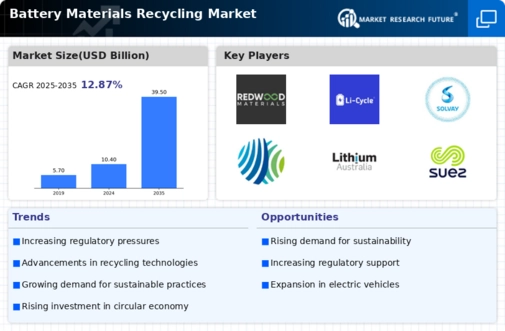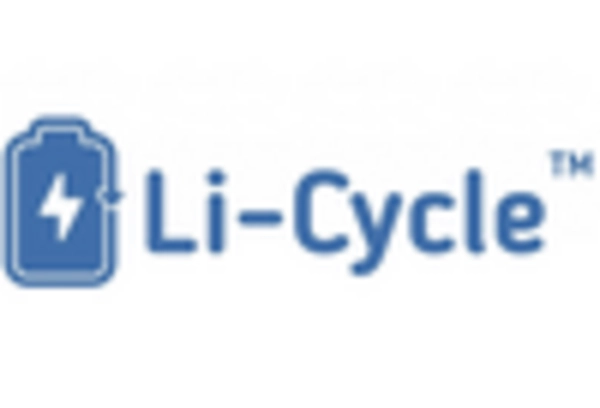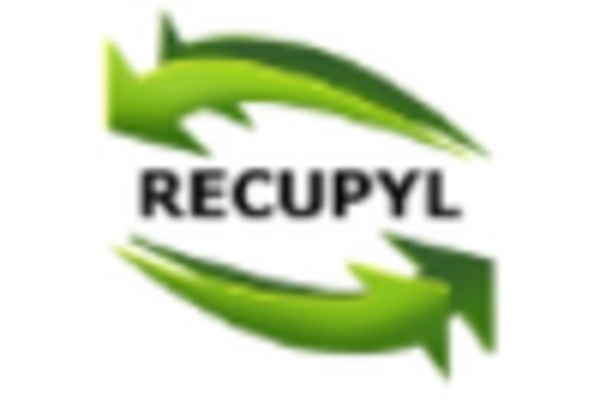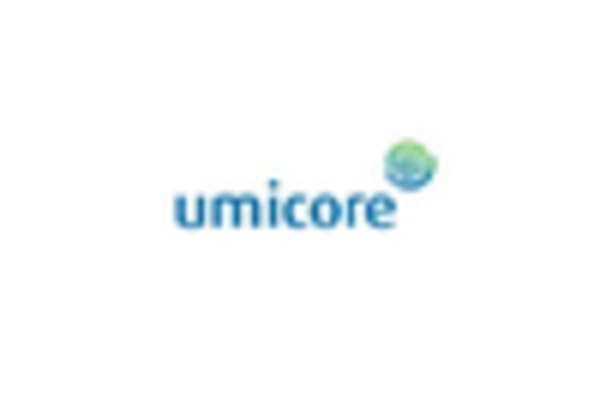Increasing Regulatory Frameworks
The Battery Materials Recycling Market is significantly influenced by the establishment of stringent regulatory frameworks aimed at promoting recycling and reducing waste. Governments are implementing policies that mandate the recycling of battery materials, thereby creating a structured environment for the industry to thrive. For example, regulations that require manufacturers to take responsibility for end-of-life batteries are becoming more prevalent. This regulatory push not only encourages recycling but also fosters innovation in recycling technologies. As a result, the Battery Materials Recycling Market is poised for growth, with compliance driving investment and operational improvements.
Surge in Electric Vehicle Adoption
The Battery Materials Recycling Market is experiencing a notable boost due to the rapid adoption of electric vehicles (EVs). As the demand for EVs continues to rise, so does the need for efficient recycling of lithium-ion batteries. The increasing volume of spent batteries from EVs presents both a challenge and an opportunity for the recycling industry. Market projections suggest that the number of electric vehicles on the road could reach over 300 million by 2030, leading to a substantial increase in battery waste. This scenario underscores the importance of developing robust recycling solutions within the Battery Materials Recycling Market to ensure sustainable management of battery materials.
Rising Consumer Awareness of Sustainability
Consumer awareness regarding sustainability is a pivotal driver for the Battery Materials Recycling Market. As individuals become more conscious of their environmental footprint, there is a growing demand for products that are sustainably sourced and disposed of. This shift in consumer behavior is prompting manufacturers to adopt more sustainable practices, including the recycling of battery materials. Market data indicates that companies that prioritize sustainability are likely to gain a competitive edge, as consumers increasingly prefer brands that demonstrate environmental responsibility. Consequently, the Battery Materials Recycling Market is benefiting from this trend, as businesses align their operations with consumer expectations.
Economic Incentives for Recycling Initiatives
Economic incentives play a crucial role in shaping the Battery Materials Recycling Market. Governments and organizations are increasingly offering financial support and subsidies to promote recycling initiatives. These incentives can take various forms, including tax breaks for companies that invest in recycling technologies or grants for research and development in sustainable practices. Such economic measures not only encourage businesses to engage in recycling but also stimulate innovation within the industry. As a result, the Battery Materials Recycling Market is likely to expand, driven by the financial viability of recycling operations and the potential for profitability in recovering valuable materials.
Technological Innovations in Battery Recycling
The Battery Materials Recycling Market is experiencing a surge in technological innovations that enhance recycling efficiency. Advanced techniques such as hydrometallurgical and pyrometallurgical processes are being developed to recover valuable materials like lithium, cobalt, and nickel from spent batteries. These innovations not only improve recovery rates but also reduce environmental impact. For instance, recent advancements have led to recovery efficiencies exceeding 90 percent for certain materials. As technology continues to evolve, the Battery Materials Recycling Market is likely to witness increased investment in research and development, further driving growth and sustainability in the sector.

















Leave a Comment